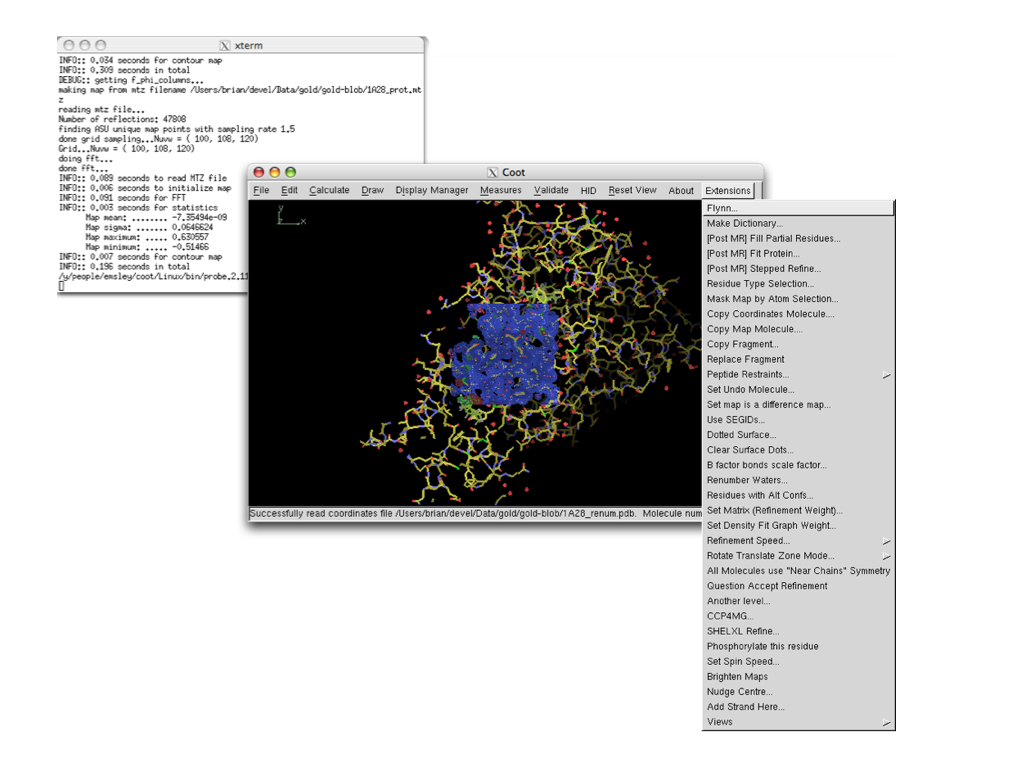

SBase is a database containing descriptions of practically all residues and small-molecule component types found in the PDB as of 2007. This starting point involves the perception of chemistry and is not handled by current Coot tools.

These programs not only produce a three-dimensional model for the ligand but also, and just as importantly, a restraints dictionary.Īn alternative starting point is a copy of the three-dimensional model coordinates of the ligand. Software to convert from these starting points (and, in some cases, further steps in the ligand-fitting process) include the programs CORINA (Gasteiger et al., 1990 ▶), LIBCHECK (Vagin et al., 2004 ▶), PRODRG (Schüttelkopf & van Aalten, 2004 ▶), phenix.elbow (Moriarty et al., 2009 ▶) and AFITT (Open Eye Scientific Software Wlodek et al., 2006 ▶). The three-dimensional coordinates of a ligand conformer and the dictionary can be generated by a number of means depending on the starting point. The task of ligand fitting to a protein structure often starts with the generation of a representation of the ligand. The tools presented here assist with the generation, validation and manipulation of protein–ligand complex structures with a view to increasing ‘crystallographic intelligence’ and automation.ģ. Generating ligand descriptions with Coot These tools illustrate chemistry, handle fragments and interact with programs of the CCP4 suite (Winn et al., 2011 ▶). Here, we describe the new tools in Coot that are designed to assist with ligand model building. The determination of protein–ligand complex structures has mostly been automated (see, for example, Mooij et al., 2006 ▶) but still requires user intervention at various stages if the active site has substantial flexibility. The combination of HT methods and a fragment-based approach has extended the utility of structural biology as a screening technique for the identification of novel small-molecule binders of medically relevant target proteins.Īlthough the pharmaceutical industry has used ligand structures successfully, it has been shown that the quality of small molecules in protein–ligand complexes varies widely in the worldwide Protein Data Bank (wwPDB Berman et al., 2003 ▶) and therefore the wwPDB cannot always be considered to be a reliable repository of structural information pertaining to small molecules (Cooper et al., 2011 ▶). In recent years, the use of high-throughput (HT) crystallographic techniques has enabled the delivery of structural data in a timely fashion and many drug-discovery programmes have progressed in the light of information from target-ligand complex structures (Tickle et al., 2004 ▶ Williams et al., 2005 ▶). The use of protein crystallography for the optimization of potential drug-candidate molecules has been well established (Congreve et al., 2005 ▶).


 0 kommentar(er)
0 kommentar(er)
